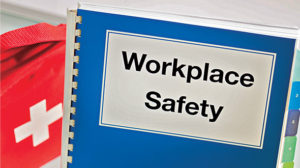What safety documents are in your filing cabinet?
Did you know that the average safety inspection form has over 50 fields that need to be audited for accuracy and completion? Have you completed a thorough audit of your safety documentation over the last 12 months to identify mistakes and target additional training for your team?

Have you completed an audit of your safety documentation over the last 12 months? Photo: iStock.com/YinYang
Many companies still rely on outdated documentation processes that come up short in effectiveness and accuracy. Think about your current safety documentation processes.
- Does your company simply file inspections and records, then allow them to gather dust?
- Are you able to identify safety inspections that do not have a correctly documented leak check, flow and lock-up test, or customer signature?
- Do you have a system with proactive alerts in place to keep track of when regulators need to be replaced, when DOT container recertifications are due, and maintain compliance with NFPA 58 cathodic protection requirements?
- Can you identify the technicians who are repeating mistakes in terms of errors and omissions on safety documentation?
- Would your company benefit from electronic storage and retrieval of important safety and compliance documentation for customers?
If your team still relies on a paper-driven safety documentation process to organize this critical safety information and compliance data, then you could be at risk.
Maximize efficiencies through technology
Implementing a management and compliance system that uses technology to track, store and retrieve safety documentation is the solution to improve internal efficiencies and protect your company.
Additionally, it can monitor important compliance data and generate management reports to track compliance requirements and employee performance. This ability to retrieve data gives management a valuable tool to enhance daily operations, reduce unnecessary risk and improve overall safety practices.
Jerry Schimmel is the vice president of P3 Propane Safety and P3 Duty to Warn.
















